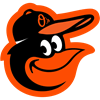Each offseason I try to identify a bunch of fringe prospects who might be cheap or free in deeper dynasty formats, hopefully finding ways to slightly improve the bottom of the roster for owners looking to cut a dud or two.
The players are listed in a generally descending order of present value, so the further down you read the more flimsy the player's value. The upside in each case is highly conditional, so none of these players should be understood as slam-dunk values. Although there's a lot of promise in each player's case, they're all lottery tickets at most in the meantime.
Tyler Johnson, WR, TB
As a longtime favorite of the online dynasty football scene, Johnson isn't likely to be truly cheap in too many leagues. If the owner in your league might harbor indifference toward Johnson, though, then he's likely worth acquiring. Even if Antonio Brown re-signs following the placement of the franchise tag on Chris Godwin, that could just make the price more favorable on a player who projects as an eventual starter either way, and perhaps sooner than most expect too.
Showing the ability to play both the slot and outside at various points as a rookie, Johnson played 265 regular season snaps and drew 17 targets, catching 12 for 169 yards and two touchdowns (66.7 percent catch rate, 9.9 YPT). That followed a collegiate career where he was memorably productive in his final three seasons, playing high above the team baseline in each season while carrying burdensome volume. All Johnson has ever done is produce very well.
Scotty Miller has always produced very well too and isn't going anywhere, but luckily the two players are very different and Johnson's traits translate better for a three-down role. Miller (5-9, 174) isn't likely to fit as well as a run blocker outside as Johnson, so Miller might struggle to earn as many snaps in two-wide formations, especially in the red zone. Between that and the ability to crosstrain behind Evans and Godwin, an injury to either could result in a starting role for Johnson for however long their absence.
Tyron Johnson, WR, LAC
I nearly ranked Tyron ahead of Tyler, but Tyron is probably more of a long shot as a former undrafted third-year player than Tyler as a second-year former fifth-round pick. Still, when I look at Tyron on a point-by-point basis I struggle to identify any enduring red flags, and in hindsight it's easy to make the case that the league simply overlooked him all this time.
Johnson was originally a prized recruit for LSU, and in his true freshman season he flashed promise by catching nine receptions for 150 yards and two touchdowns, including five catches for 83 yards and a touchdown against Mississippi. He transferred to Oklahoma State following that year, though, and after sitting out the 2016 season he disappointed in his first year with the Cowboys, catching only 18 receptions for 293 yards and three touchdowns on a team that threw for 5,059 yards and 37 touchdowns. But that Cowboys team was stacked with upperclassmen -- seniors James Washington and Marcell Ateman were locked into starting roles outside, so that left Johnson as the functioning WR5 while Jalen McCleskey and Dillon Stoner took the slot snaps.
Johnson's first chance at a starting role occurred in 2018, at which point he was over-aged at about 22.75. Because of that it was reasonable that his otherwise productive season was received with skepticism – his 53 receptions for 845 yards and seven touchdowns on 97 targets would have gone a lot further if he had been 20 at the time, especially since then-19.5-year-old Tylan Wallace dwarfed Johnson's production with 86 receptions for 1,491 yards and 12 touchdowns on 158 targets. Johnson was only at-baseline, moreover (54.6 percent catch rate, 8.7 YPT on a 59.4 percent completed, 8.2 YPA offense). Wallace could be a uniquely good player, though, and a player's prospect profile is always evolving as their career advances. Johnson's 2020 season, then, is admissible evidence in his evaluation, and if the numbers are any indication it's possible that he turned a corner in his development.
Johnson's 2020 season only entailed 263 snaps, meaning its trends might not stick, but what occurred in those snaps was distinctly impressive. The basic appeal is this: Johnson drew high-difficulty targets on a frequent per-snap basis, which generally indicates that he got open at an uncommon frequency. Normally depth of target is a downward pressure on target volume, but Johnson's 20.2-yard average depth of target occurred over 26 targets, leaving him with 2.0 air yards per snap (98th percentile). Contrast this with teammate Jalen Guyton, whose ADOT of 16.0 – high but still substantially less than Johnson's – occurred on just 55 targets over a whopping 919 snaps. Johnson ran as far or farther downfield on his routes than Guyton, yet Guyton drew only one target per 16.7 snaps while Johnson drew one target per 10.1 snaps. Johnson was also much more effective on a per-target basis, catching 76.9 percent of his targets at 15.3 yards per target while Guyton caught 50.9 percent of his targets at 9.3 yards per target.
The question then becomes what would have happened if Johnson had played as many snaps as Guyton, and what are the chances that their workload split is renegotiated under a new coaching regime? Guyton is about as fast as Johnson at around 19 pounds heavier, so it's possible that Anthony Lynn preferred him over Johnson for run-blocking reasons. Guyton resembles no player in the Rams offense, though, and new coach Brandon Staley is presumably more partial to the ideology of Sean McVay than that of Lynn. Johnson, meanwhile, has a frame very similar to Robert Woods, whose skinniness never seems to obstruct the run game for the Rams. If subject to the single criterion of yardage from scrimmage per snap then there's almost no question Johnson ranks ahead of Guyton, and if so the repercussions could be significant if the Justin Herbert offense maintains its current ascent. If Johnson can produce 398 yards and three touchdowns on 263 snaps, then it might be worth contemplating his upside in the event that he stumbles into a 700-plus snap role under Staley.
Anthony Firkser, TE, TEN
Whereas the Johnson wide receivers have some remaining ambiguity in their talent levels, in my mind there's no questioning the standout talent of the two upcoming tight ends in this list, both of them restricted free agents. The ideal scenario in both cases is that they get signed to other teams, but in both cases there also remains a route to break out even on the current team.
Firkser is first up. The former undrafted player out of Harvard has all but proven himself one of the league's most effective receivers at tight end, and there's a chance for his workload to increase in the near future. Through 732 career regular season snaps he has drawn 97 targets, catching 72 for 816 yards. That's a catch rate of 74.2 percent at 8.4 yards per target – excellent efficiency. His effectiveness withstood increased playing time, too, as his 2020 career high of 348 snaps saw him produce a catch rate of 73.6 percent at 7.3 yards per target in an offense that completed 65.2 percent of its attempts at 7.9 yards per attempt. The 0.6 in YPT deficit is overruled by the 8.1 percent surplus in catch rate, qualifying it as above baseline.
Jonnu Smith is very good of course and Tennessee has reason to keep him in town, but Firkser might see his workload increase anyway since the Titans will likely lose Corey Davis in free agency after already shedding slot receivers Adam Humphries and Kalif Raymond. Firkser often lines up at slot receiver and could be Tennessee's main replacement plan for Humphries/Raymond just as a Davis exit would put a lot of targets up for grabs.
Mo Alie-Cox, TE, IND
Alie-Cox is a beast. Whereas Firkser is more of an h-back and pass-catching specialist, MAC is a hulking tight end who excels in-line almost to a fantasy fault. Because MAC is a killer blocker, the Colts sometimes made the ill-conceived decision to have him block while Trey Burton or even Jack Doyle ran routes. If MAC were a weaker blocker he might have had more pass-catching opportunities by now.
The former Virginia Commonwealth basketball player was only in his fourth year at the position in 2020 but was very effective as a pass catcher, drawing 39 targets at an ADOT of 6.7. With an ADOT at the 39th percentile while generating 0.5 air yards per snap (47th percentile) there's a tension between how often MAC got open and how often he was allowed to run routes even before you account for blocking rate. MAC had to block more than Doyle and especially more than Burton, yet MAC drew targets at a rate higher than what you project as baseline for a player running at his depth of target. Not just this, but MAC was exceptional on a per-target basis, catching 81.6 percent of his targets at 10.1 yards per target.
Doyle and Burton are not very good, and for Frank Reich to leave MAC underutilized again would be egregious. Doyle is smaller and slower than MAC and inferior in every aspect – MAC is the better blocker, yet Doyle only drew one target per 6.7 routes ran as MAC drew one target for every 5.15 routes ran. There's still time for Reich to come to his senses, though – even Travis Kelce was once underutilized as a pass catcher by Andy Reid. MAC doesn't have that sort of upside, but he has the talent to be a peak Martellus Bennett at the very least, and Burton is mercifully a free agent.
Dalton Keene, TE, NE
Keene is probably more of a wildcard than Firkser and Mo Alie-Cox, and in the short term especially his utility is much more obscured. Although he was a third-round pick last year, Keene was basically learning a new position in 2020 and won't turn 22 until April 14. That sort of rawness makes it difficult to project any sort of reliability. But with so much unknown about Keene comes the fact that this uncertainty swings both ways, and the possibility of upside is undeniable in the meantime.
Keene cannot be written off on the basis of his rookie year, which he endured at less than 21.5 years old and following a compromised offseason. As much as we'd like to see Keene do better than three catches for 16 yards on 140 snaps, it's still not nearly as concerning as 23-year-old Devin Asiasi catching two receptions for 39 yards on 213 snaps.
Plus, Bill Belichick acknowledged before the season that it would be unfair to expect much in Keene's rookie season. From an NESN article posted shortly after the 2020 draft:
"I mean, when you watch Dalton play, you just don't see a lot of things that we do," Belichick said in a video conference call with the media. "The Virginia Tech offense didn't really translate too much to a New England Patriot offense. That's not uncommon with other players as well. It is what it is. I think the things you saw him do, which was his blocking, his effort to block, his toughness, ability to make plays with the ball in his hands, and certainly the intent of the offense to get him the ball was impressive. They did a lot of things to try to get him the ball one way or another: hand it to him, throw it to him, put him in different locations so that he could run with it or catch it and run with it. That's what you saw.
I've already talked to him about that, that it's going to be a big transition for him in terms of learning our system, being I would say, more detailed, more specific on a lot of assignments, particularly in the passing game, learning how to block in close quarters. Again, he shows plenty of ability to do that in size, quickness and so forth. Just he hasn't done a lot of it. He played quite a bit in the backfield, not as a fullback, but kind of an off-the-ball, sometimes a fullback location, but not really lined up behind the quarterback, but lined in the backfield, off the lines. A little bit of a different location than what we would normally use. He's a smart kid. He's athletic. He's strong. He's tough. I don't see any reason why he can't and won't make those adjustments in time. We'll work on it."
Rather than fixating on Keene's dismal rookie season numbers, we should keep Belichick's quotes in mind while otherwise recalling the facts that Keene is a standout athlete who was productive at Virginia Tech even with a drastic age disadvantage. Keene caught 59 of 70 targets for 748 yards and eight touchdowns (84.3 percent catch rate, 10.7 yards per target) over three years, and at 6-foot-4, 253 pounds he posted a 4.71-second 40 (69th percentile according to Mockdraftable.com), 125-inch broad jump (94th percentile), and 11.26 agility score (~79th percentile). It's Asiasi who's the underdog here in the long term.
Isaiah Hodgins, WR, BUF
Even if the Bills shed John Brown's contract there will still be Stefon Diggs/Gabriel Davis outside and Cole Beasley in the slot, so the Buffalo receiver rotation is crowded for the foreseeable future. So long as they cut Brown, though, it's still time to take Hodgins seriously going into 2021. Although he didn't play in 2020 due to a September shoulder surgery, there's reason to think Hodgins might profile as a swing backup for the Bills in 2021, in which case he'd have a chance to step into a role with something like 40 snaps per game in the event of injury to any of the three leading Bills receivers.
The only question with Hodgins is his athleticism. His skill level is not up for debate – the guy really knows how to play wide receiver. If he didn't, he wouldn't have been able to produce the way he did at Oregon State, where over his age-19.83 and age-20.83 seasons he caught 145 receptions for 2,047 yards and 18 touchdowns on 216 targets (67.1 percent catch rate, 9.5 YPT). The Oregon State offense baseline over that span was just 60.8 percent completed at 7.1 yards per target, which means Hodgins outplayed the baseline by 6.3 catch percentage points and 2.4 yards per target even at an age disadvantage.
At 6-foot-4, 210 pounds Hodgins is held back only by his 4.61 speed, which may or may not be a problem in the NFL. I'm inclined to say he'll eventually succeed despite it, especially since his vertical (36.5 inches, 64th percentile) and broad jump (124 inches, 74th percentile) were very good. Hodgins might not be fast, but he is a good athlete overall. The only thing that remains to be seen is whether his athletic strengths pertain sufficiently toward the tasks at hand as an NFL wide receiver. But even if his speed is a problem outside, Hodgins' ball skills should allow him to work as a Big Slot in the NFL, and Hodgins should be able to line up outside in the red zone at the very least.
Jacob Breeland, TE, BAL
We are far into the weeds at this point, but Breeland is still an intriguing prospect for the Ravens. He went undrafted in 2020 and sat out his rookie season due to an ACL and meniscus tear he suffered in his final season at Oregon, meaning he was basically a medical redshirt. If he's back to full health then the Ravens might have a use for him, especially with bruiser Nick Boyle working his way back from a Week 10 MCL tear.
Breeland (6-foot-5, 252 pounds) told OregonLive last year that he figured he runs a 4.65-second 40. That's probably generous, but if it's remotely on the mark then he should offer Baltimore a seam threat that they're surprisingly desperate for. Mark Andrews is of course the lead guy for that function, but unless they let Devin Duvernay send Willie Snead to the bench then the Ravens can always be stopped down the seam with a single safety. Breeland was certainly an effective pass catcher at Oregon otherwise, catching 74 receptions for 1,225 yards and 13 touchdowns on 105 targets (70.5 percent catch rate, 11.7 YPT). The Ravens never replaced Hayden Hurst, and Breeland might be a convenient way to account for that in 2021.
Deontay Burnett, WR, PHI
It'll probably never happen for Burnett in the NFL. He's all skill with no tools, and his athletic traits aren't necessarily in harmony with his skills. By that I mean Burnett is basically an outside receiver in terms of his skills, but his frame (6-foot, 186 pounds) and lack of speed (4.6-second range 40) are tools more apt for a slot receiver. I don't know why Burnett hasn't simply been moved into the slot if this is so much of a problem, but in the meantime it's true to say that when lined up outside Burnett might be a liability both as a blocker and downfield threat. Even if he's good, Burnett probably can only function as a possession receiver.
But damn, this guy's skill set as an outside route runner couldn't be much more convincing. Even with everything working against him as an undrafted player since 2018, Burnett has only played well when given the opportunity. Most notably, at just short of 21 years old he caught 10 passes for 143 yards on 15 targets in 128 snaps for the Jets. His 73 snaps with the Eagles yielded five catches for 67 yards on eight targets. Each time he stepped on the field and played well, though, he was almost immediately banished to the bench. Even after three years in the league, Burnett won't be 24 until October.
None of Burnett's NFL history is half as interesting as his collegiate background, though. The case for Burnett primarily lies in the details of his USC career, where he dominated as Sam Darnold's WR1 in 2017. Burnett is only one day older than dynasty darling Michael Pittman, yet Burnett played ahead of and outproduced Pittman when they played together. Their roles were different and Pittman is of course the much better pro prospect, but if Pittman is good then Burnett almost cannot be bad. Even if Pittman isn't good, there's still a chance Burnett is.
From 2016 to 2017 Burnett caught 142 receptions for 1,736 yards and 16 touchdowns on 211 targets (67.3 percent catch rate, 8.2 YPT), all while playing at ages 19 and 20. The USC passing game over that span completed 64.3 percent of its attempts at 8.2 yards per attempt, and Burnett provided 22.3 percent of its receiving yardage in those two years. As the NFL's indifference toward him has already shown, none of this assures Burnett anything. Even so, it's still uncommon to see an age-disadvantaged player produce the way Burnett did at a school like USC without ever doing anything useful in the NFL.








































